Temporary vs Permanent Grab Bars are essential for ensuring bathroom safety and stability, especially for seniors. Choosing between these options can be tricky, as both offer unique benefits but cater to different needs and circumstances—whether you’re looking for a quick fix or a long-term solution. In this article, we’ll dive into the pros and cons of each, helping you make an informed decision. Understanding these differences can make all the difference in creating a safer environment for yourself or your loved ones. Ready to make the safest choice? Let’s explore!
Contents
Temporary vs Permanent Grab Bars: Choosing the Right Option for Accessibility Needs
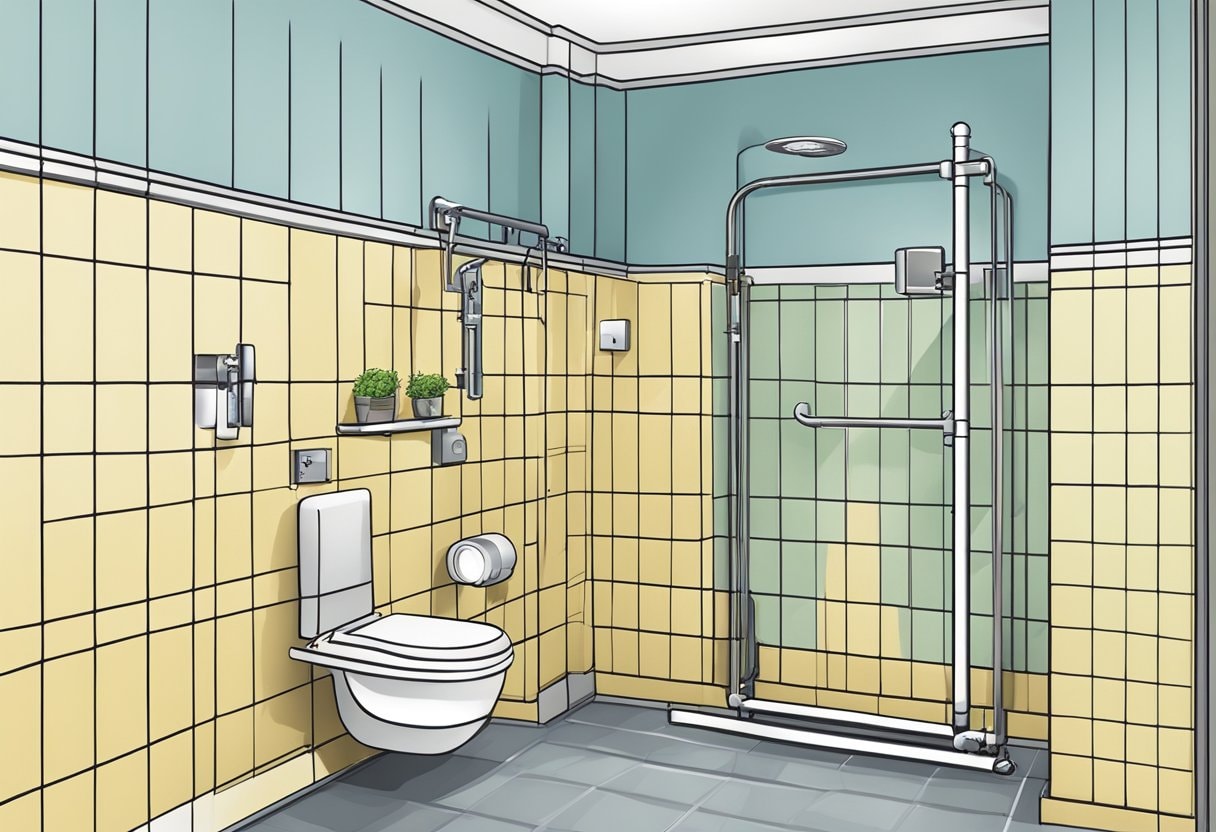
When it comes to providing stability and preventing falls in the bathroom, grab bars are a crucial addition to any household. Understanding the distinction between Temporary vs Permanent Grab Bars is essential for making an informed decision based on individual needs and living situations. Temporary grab bars, often suction-based, can be easily installed and removed as needed without altering the bathroom’s structure. On the other hand, permanent grab bars require a more involved installation process where they are anchored directly to the wall, offering enhanced durability and security.
Each type of grab bar has its advantages and disadvantages. The versatility of temporary grab bars makes them a favored choice for renters or those seeking a non-invasive solution. In contrast, permanent grab bars are often seen as a more reliable option due to their secured fittings. Maintenance, care, and adherence to regulations and standards also differ, factors that can greatly influence the decision-making process for homeowners, caregivers, and seniors.
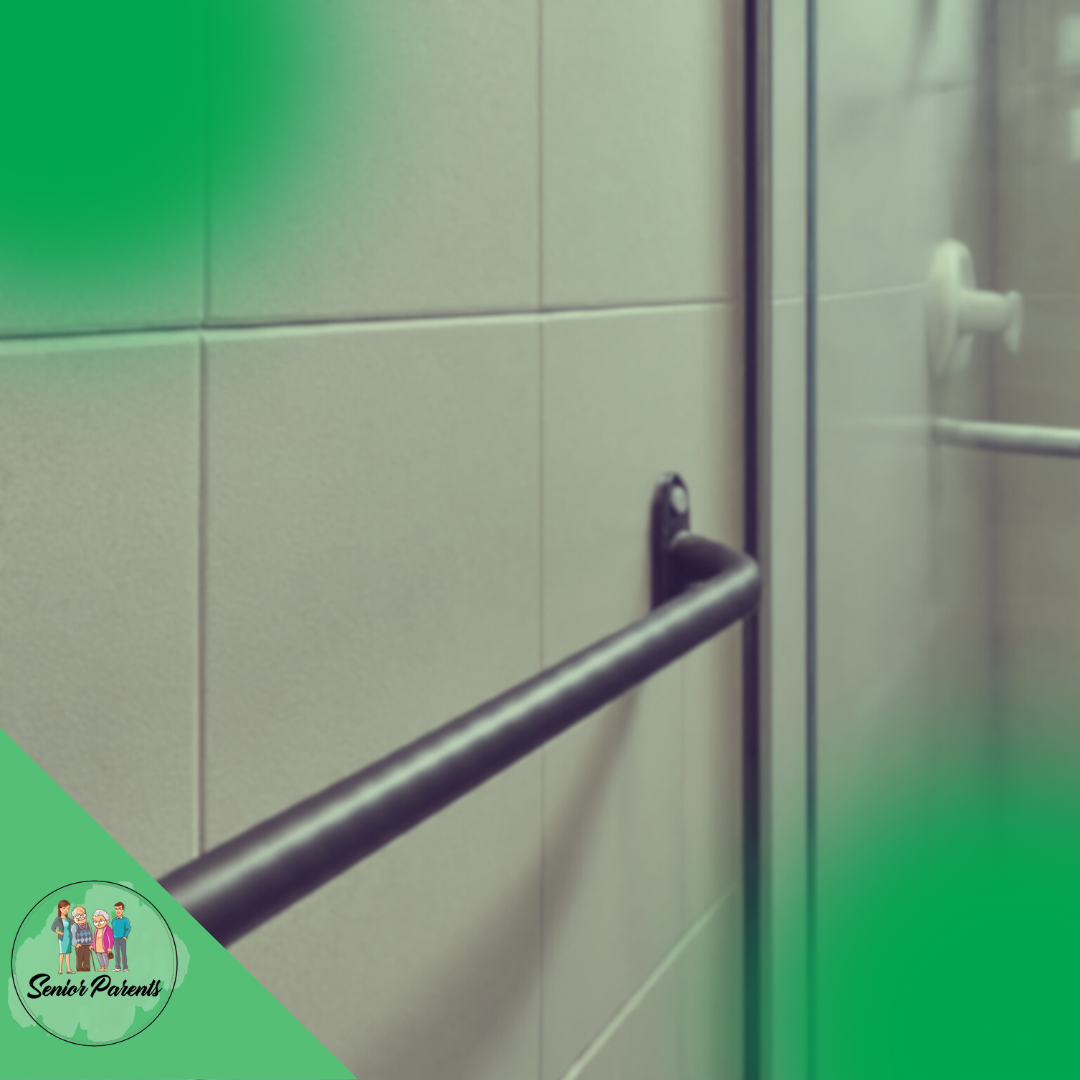
Key Takeaways
- Temporary and permanent grab bars serve the important function of safety in bathrooms but differ in installation and stability.
- Considerations such as the user’s living situation, need for stability, and bathroom modification regulations impact the choice between temporary and permanent options.
- Ongoing maintenance and understanding of industry standards are crucial for ensuring the effectiveness and legality of installed grab bars.
Understanding Grab Bars
In the context of safety and accessibility, grab bars are essential in various bathroom layouts serving individuals with mobility challenges.
Definition and Purpose
Grab bars provide stability and support for individuals as they move in the bathroom. They help prevent falls by allowing people to maintain balance on slippery surfaces.
Types of Grab Bars
Temporary Grab Bars: These usually employ suction cups to adhere to a surface and are known for their easy installation and removal. They’re convenient for travelers or renters.
- Pros: Portability; there is no need for tools during installation.
- Cons: Lower weight capacity, reliant on surface compatibility.
Permanent Grab Bars: Mounted directly into the wall, these grab bars are secure and can support more weight.
- Pros: High durability, greater weight support.
- Cons: Installation requires drilling and is not easily relocated.
Temporary Grab Bars
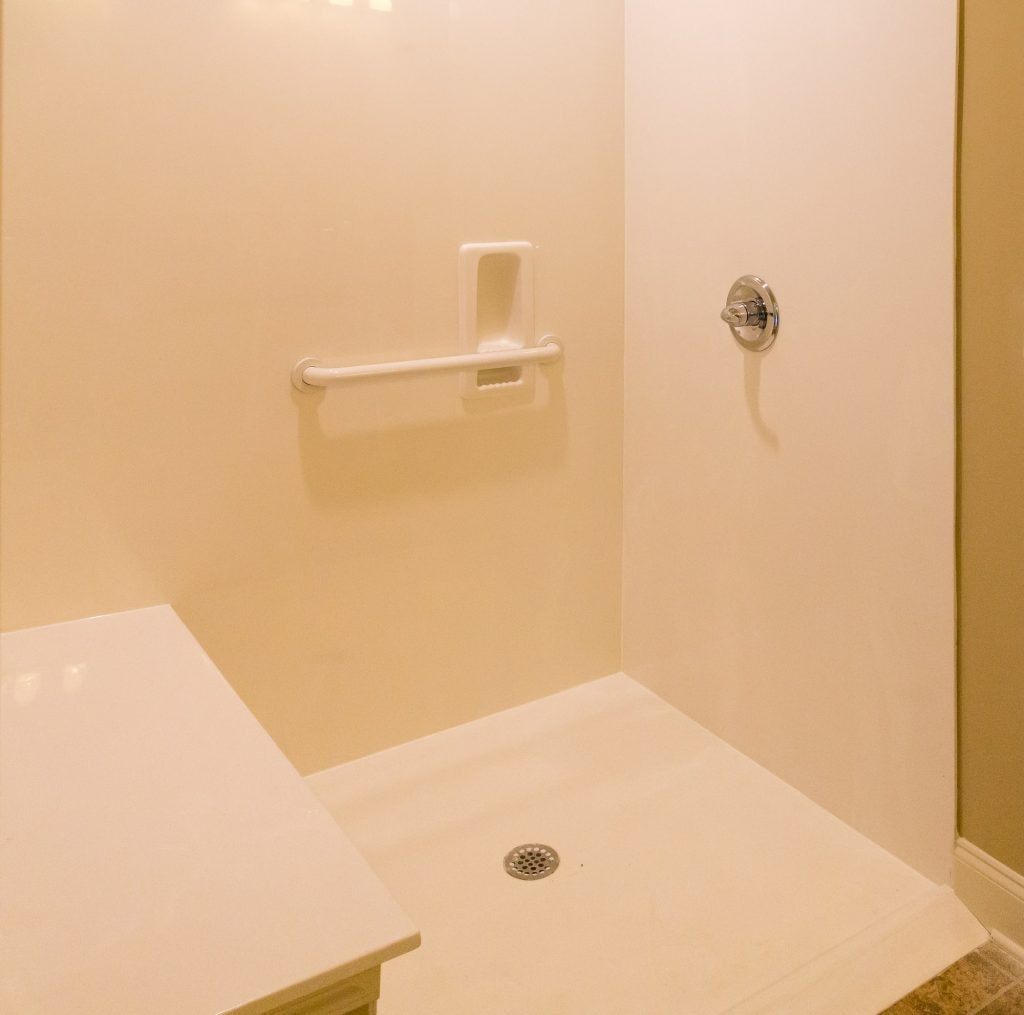
Temporary vs Permanent Grab Bars offer different solutions based on your needs, and understanding the distinctions is crucial. Temporary grab bars provide a versatile option for individuals seeking stability in their bathrooms without the commitment of permanent fixtures. They offer a balance of flexibility and support, making them an ideal choice for those needing an adjustable or non-permanent solution.
Advantages of Temporary Grab Bars
- Portability: You can easily move and relocate temporary grab bars to different areas. This portability makes them an excellent choice for travelers or renters.
- Installation Ease: These grab bars do not require tools or drilling; many adhere to smooth, non-porous surfaces through suction cups. The installation simplicity ensures a hassle-free setup process.
Limitations of Temporary Grab Bars
- Surface Restrictions: You must attach them to clean, dry, and smooth surfaces, which limits their placement options. Any texture or grout lines can compromise the suction and lead to potential safety concerns.
- Reduced Weight Capacity: Unlike permanent options, temporary grab bars typically hold less weight, which may only suit some users’ needs. This feature necessitates regular checks to ensure ongoing stability.
Permanent Grab Bars
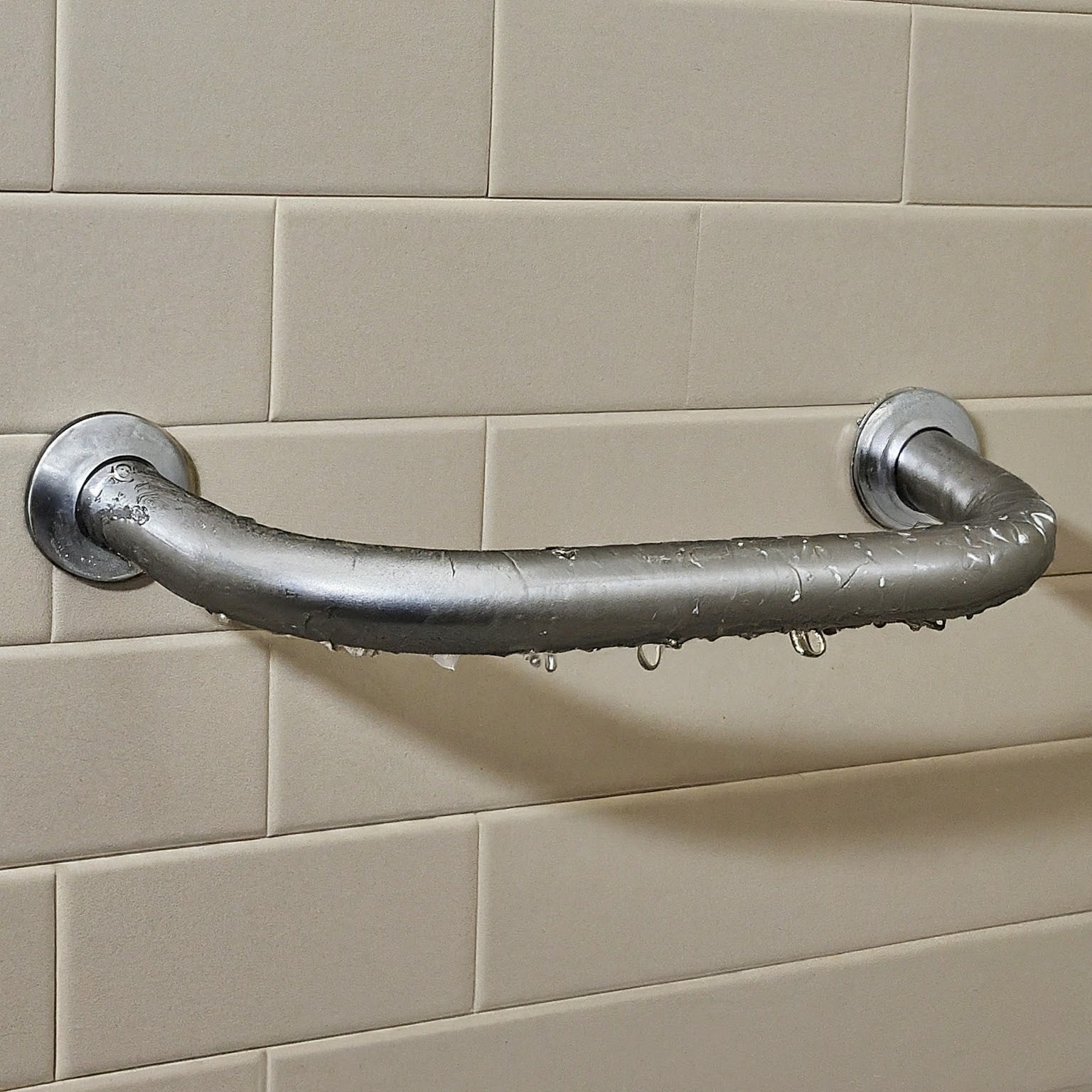
Temporary vs Permanent Grab Bars offer a range of solutions for enhancing safety and accessibility in bathrooms and other home areas where falls are a concern. Permanent grab bars, in particular, provide a reliable option for long-term use.
Benefits of Permanent Grab Bars
- Durability and Stability: Permanent grab bars are typically made of sturdy materials, such as stainless steel, and are securely mounted to walls using screws and anchors. This provides a high level of strength and stability, making them suitable for supporting weight and helping with balance.
- Customization: They can be custom-fitted to match the user’s specific needs and aesthetic preferences. This includes various lengths, finishes, and styles that can complement the room’s design.
- Increased Safety: With their secure installation, permanent grab bars reduce the risk of accidents by providing stable support for individuals during transitions in and out of the shower or bathtub or when using the toilet.
Drawbacks of Permanent Grab Bars
- Installation Process: Installation requires drilling into the wall, which might only be suitable for some types of surfaces or for renters who cannot permanently change their living space.
- Cost: The initial cost of purchase and professional installation can be higher than temporary options, as it often requires hiring a contractor to ensure secure mounting.
- Inflexibility: Once you install permanent grab bars, you cannot easily relocate them. If you need to make changes or renovations, removing or moving them can become a complex process that may damage the wall.
Comparison of Temporary and Permanent Grab Bars
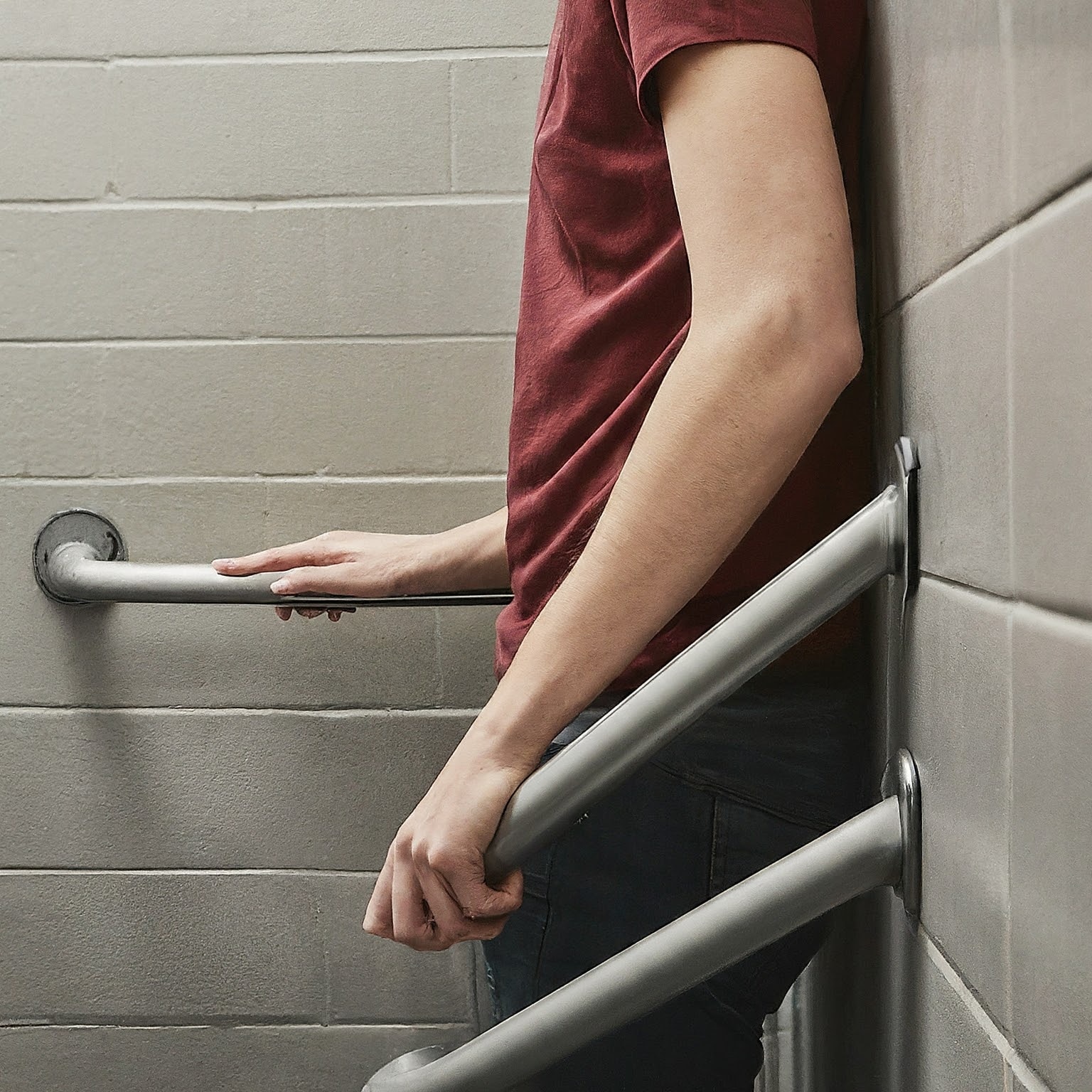
When considering grab bars for bathroom safety, customers have two primary options: Temporary vs Permanent Grab Bars. Each has distinct installation methods, stability levels, cost implications, versatility, and aesthetic impact.
Installation
Temporary Grab Bars
- Installation: Requires no tools; attaches with suction cups.
- Time: Can be installed within minutes.
Permanent Grab Bars
- Installation: Requires tools for drilling and securing wall studs.
- Time: Installation is more time-consuming, often requiring professional assistance.
Stability and Safety
Temporary Grab Bars
Improper fitting or time may compromise stability.
- They must be regularly checked to ensure suction remains strong.
Permanent Grab Bars
- Once installed, they offer long-term stability.
Securing grab bars directly to wall studs enhances safety by supporting greater weight.
Cost Implications
Temporary Grab Bars
- Lower initial cost without the need for professional installation.
- Potential for replacement costs if suction weakens over time.
Permanent Grab Bars
- Higher initial cost, including installation by a professional.
- A sound investment for long-term use without frequent replacement.
Versatility and Flexibility
Temporary Grab Bars
You can easily reposition or remove it, which benefits renters.
- Versatile placement options without permanent alterations.
Permanent Grab Bars
Once you install it, you cannot move it from its fixed position.
- Placement must be carefully planned for optimal use and accessibility.
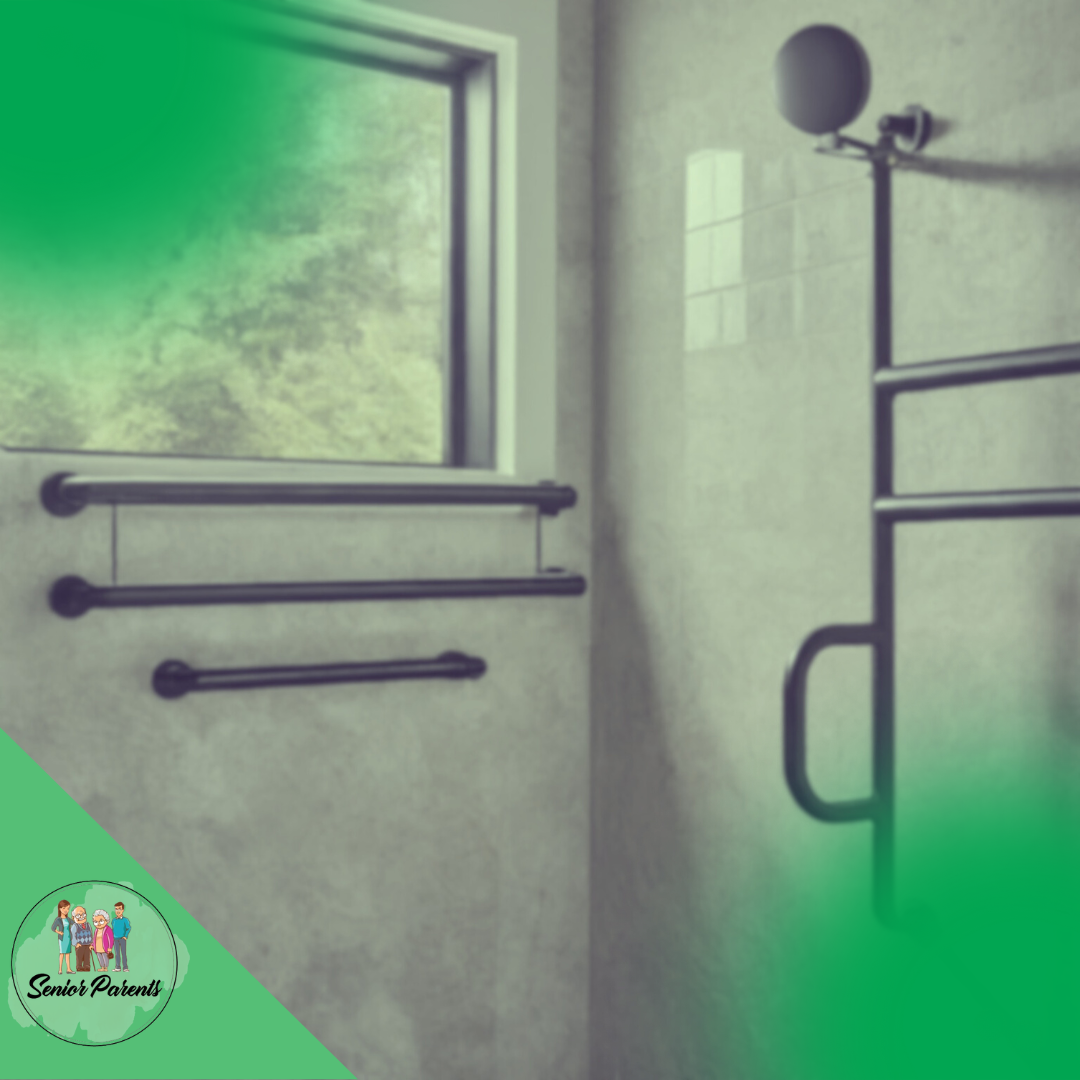
Aesthetics and Design
Temporary Grab Bars
- Often have a more clinical appearance.
- Limited options in material and finish may not complement bathroom decor.
Permanent Grab Bars
- A wide range of designs, materials, and finishes are available.
- They can seamlessly integrate with bathroom aesthetics and enhance overall design.
Here’s an additional video about finding the right height for your grab bars.
By: Toilet Talk
Did You Know?
Did you know that you need to ensure permanent grab bars withstand a minimum load capacity, often around 250 pounds of force?
Temporary vs Permanent Grab Bars: Considerations for Selection
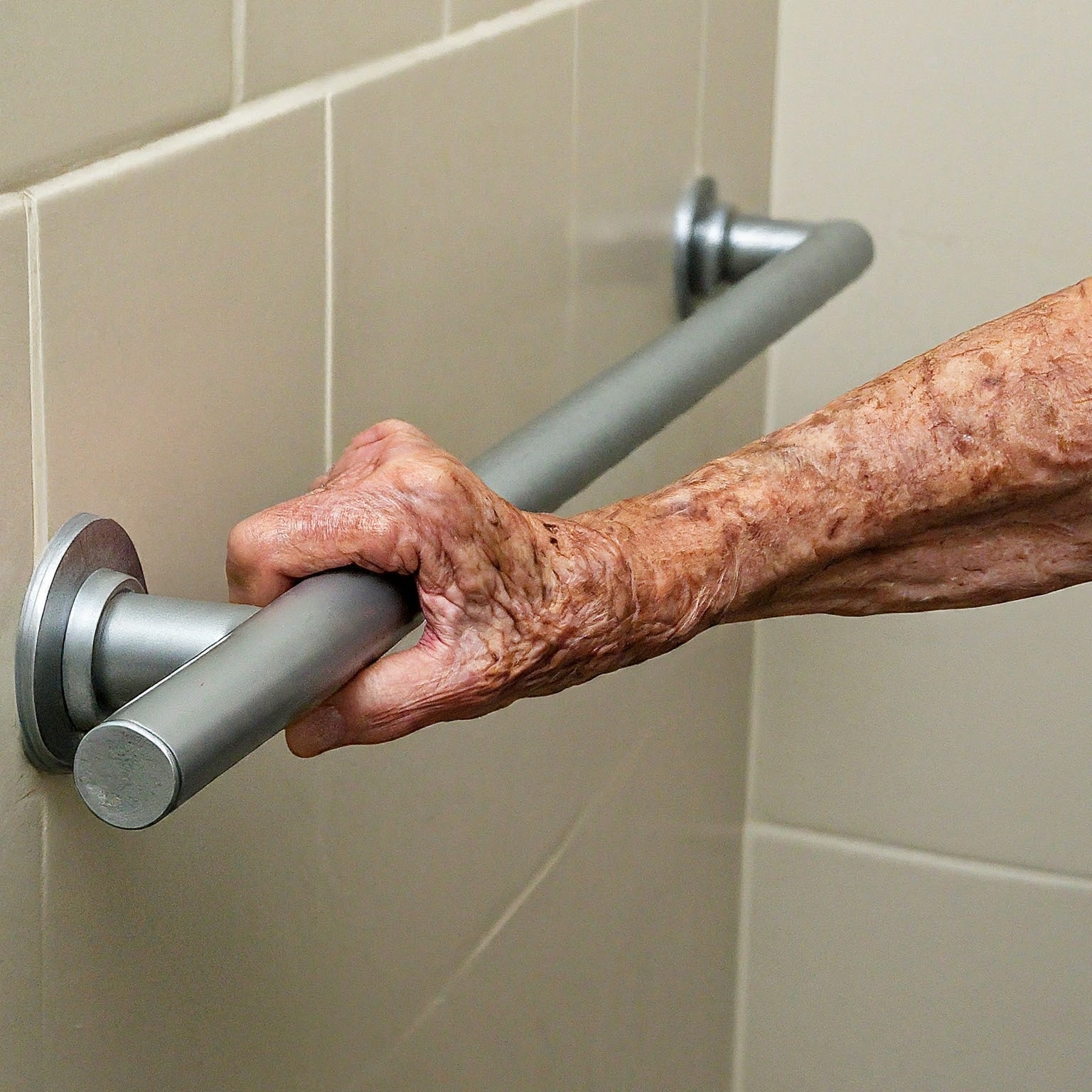
Choosing the right type of grab bar, whether temporary or permanent, requires you to carefully consider your individual needs and the specific environment where you will install the bar.
Assessment of Needs
Evaluate the primary purpose of installing grab bars. Determine whether you need them for temporary rehabilitation or long-term support. Use temporary grab bars for short-term needs, while permanent grab bars offer ongoing stability.
Space and Environment Constraints
It is crucial to analyze the bathroom layout and existing fixtures. For temporary grab bars, ensuring compatibility and sufficient suction surface is key. For permanent installations, identifying suitable wall studs for secure mounting is essential.
User Preferences
Personal comfort with using the grab bar is paramount. Some users might prefer non-slip, textured handles, while others might opt for grab bars that blend seamlessly with the bathroom décor, such as those highlighted as the best subtle grab bars.
Health and Mobility Factors
Considering the user’s physical abilities, such as grip strength and balance, is crucial in determining the appropriate grab bar type. Permanent grab bars typically offer a wider range of options for different health and mobility needs.
Maintenance and Care
Maintaining grab bars is crucial to ensure safety and longevity. Proper care can prevent wear and damage while considering the potential need for future replacements or upgrades.

Cleaning and Upkeep
For temporary grab bars, you often need to wipe them down with a mild detergent. Since these bars are not fixed and have suction cups, dust can accumulate and compromise their grip. Therefore, you should regularly check and clean the suction cups to maintain their suction strength.
For permanent grab bars, regular cleaning with a non-abrasive cleaner prevents rust and corrosion, especially for grab bars located in moist environments like bathrooms. Stainless steel grab bars may require special cleaners to maintain the finish and prevent damage.
Longevity and Durability
Temporary grab bars are typically made of plastic or rubber materials, which may degrade over time due to exposure to moisture and heat. On the other hand, permanent grab bars are commonly constructed from durable materials like stainless steel, which can endure rigorous use and exposure without significant wear.
Replacement and Upgrade Possibilities
Temporary grab bars offer the flexibility to be easily replaced or repositioned without needing tools or alterations to the installation site. Conversely, permanent grab bars require a more involved process for replacement or upgrading. Removing hardware and patching walls often becomes necessary, and users might see this as either a benefit or a drawback, depending on whether they prioritize adaptability or stability.
Regulations and Standards
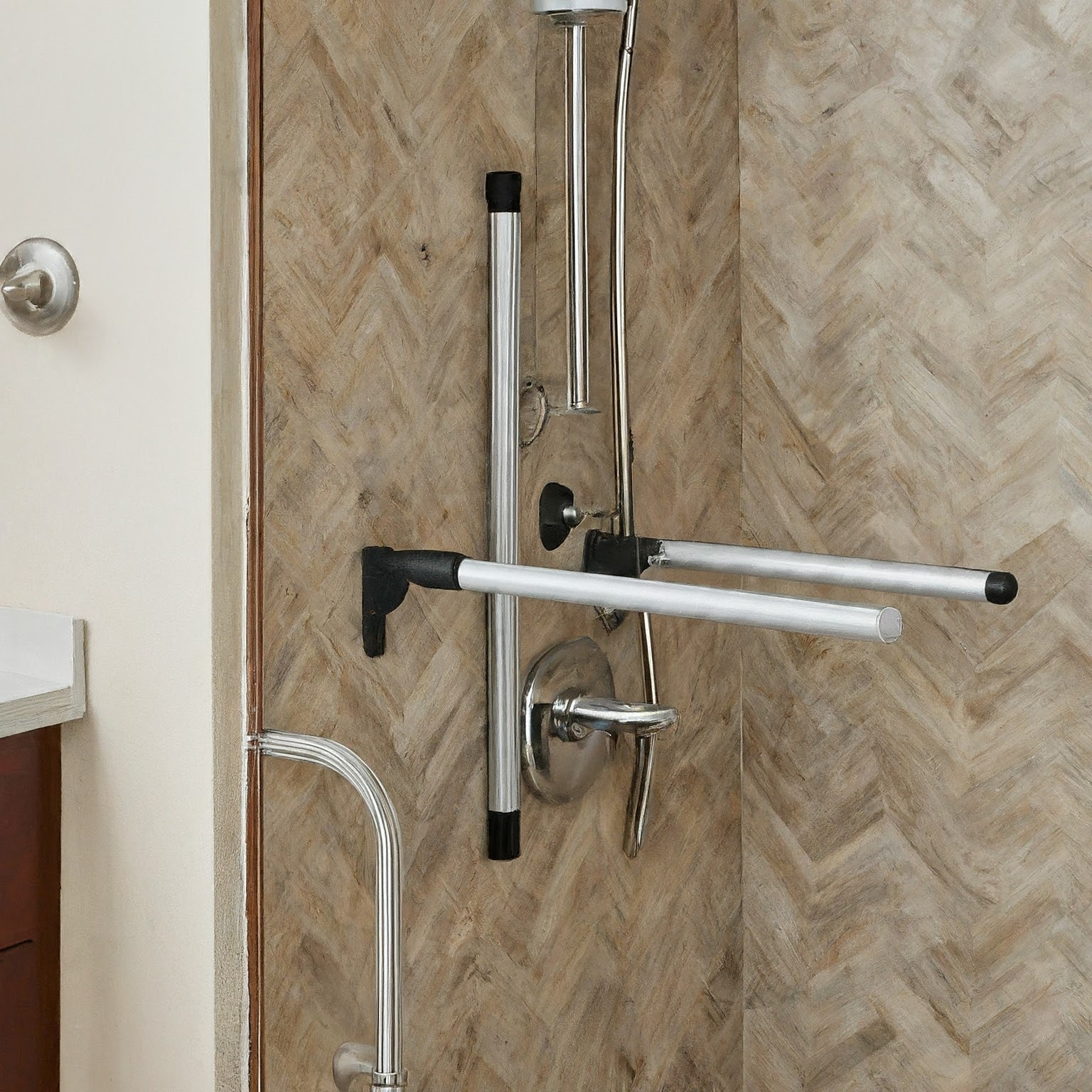
Regarding grab bars, adhering to regulations and standards ensures safety and accessibility. This section discusses compliance with the Americans with Disabilities Act (ADA) and local building codes, pivotal for temporary and permanent grab bars.
Compliance with ADA Guidelines
The Americans with Disabilities Act (ADA) provides detailed guidelines for grab bars to make restrooms accessible to all individuals. For permanent installations, the ADA stipulates specific requirements such as:
- Height: Install grab bars between 33 and 36 inches above the floor.
- Diameter: The bar should have a diameter between 1¼ to 2 inches.
- Space: A 1½ inch clearance between the grab bar and the wall must ensure a proper grip.
Temporary grab bars may not always meet these strict guidelines, but they should be as close as possible to ensure user safety.
Local Building Codes
Local building codes complement ADA guidelines and may add additional requirements for installing grab bars. Contractors and homeowners must consult with local building codes, which can:
Specify the installation techniques and choose the type of hardware to use.
Permanent grab bars must withstand a minimum load capacity, often around 250 pounds of force.
- Dictate that multi-family and public buildings follow more stringent codes than single-family homes.
Failure to comply with the applicable local building codes can lead to legal implications and put users at risk.
Here’s an additional video about how to make a senior’s bathroom safe.
By: LRN2DIY
Choosing the Right Grab Bar: Temporary vs Permanent Solutions for Bathroom Safety
When selecting grab bars for bathroom safety, understanding the differences between temporary and permanent options is crucial. Both grab bars provide essential support and stability but cater to distinct needs and preferences.
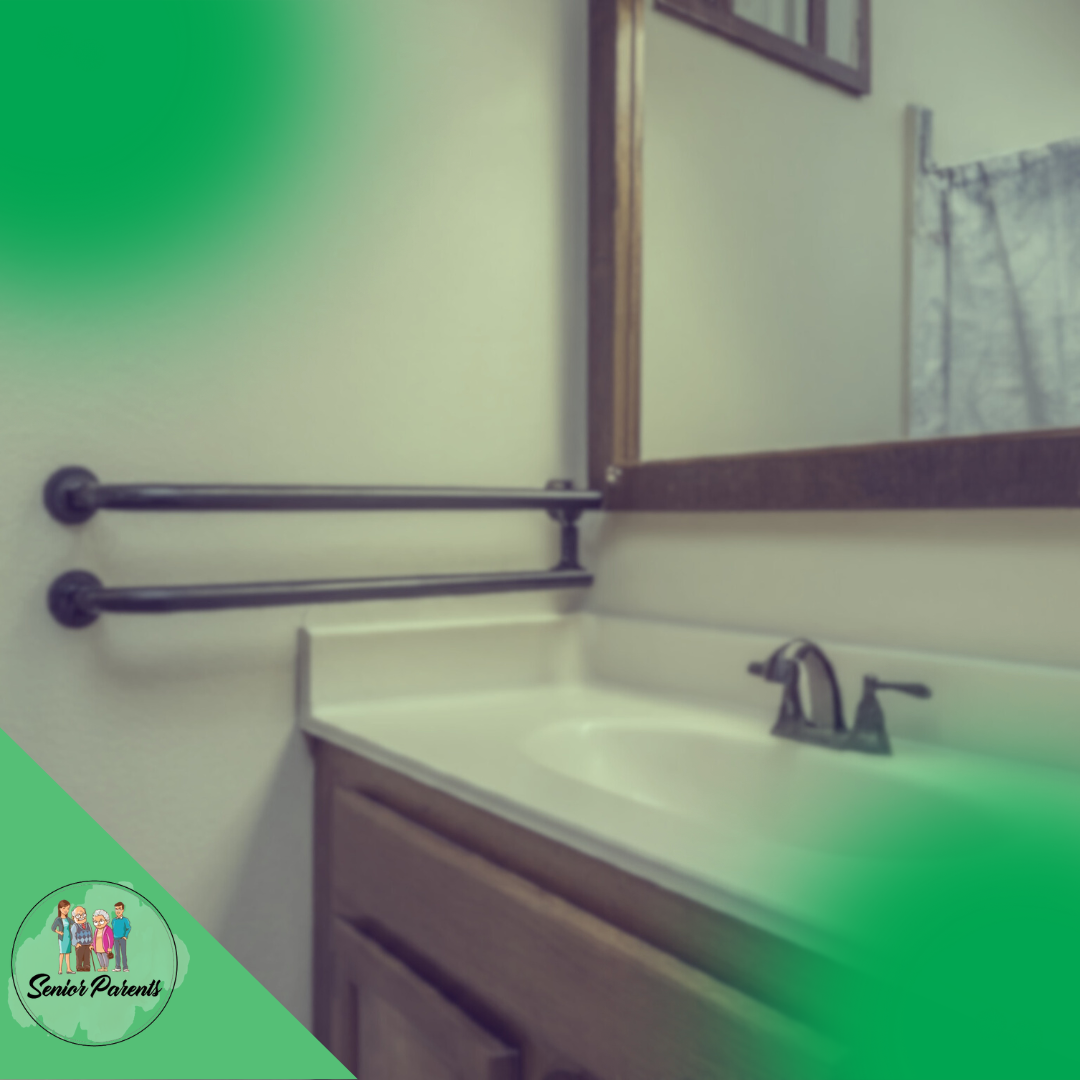
Temporary grab bars offer flexibility and ease of installation, making them ideal for renters, travelers, or those needing a short-term solution. They are convenient and portable but come with limitations such as reduced weight capacity and dependency on surface compatibility. Their ease of use is balanced by the need for regular checks to ensure stability.
On the other hand, permanent grab bars provide a long-term solution with enhanced durability and strength. Securely anchored into the wall, they offer superior stability and safety, ideal for those needing consistent support. However, they require a more complex installation process and may not be easily relocated once installed.
Ultimately, the choice between temporary and permanent grab bars depends on individual needs, living situations, and preferences. Temporary grab bars benefit those requiring a flexible, non-invasive solution, while permanent grab bars are suitable for those seeking a durable, reliable option. Considering factors such as installation ease, cost, stability, and maintenance will help make the most appropriate decision to ensure safety and accessibility in the bathroom.
Frequently Asked Questions
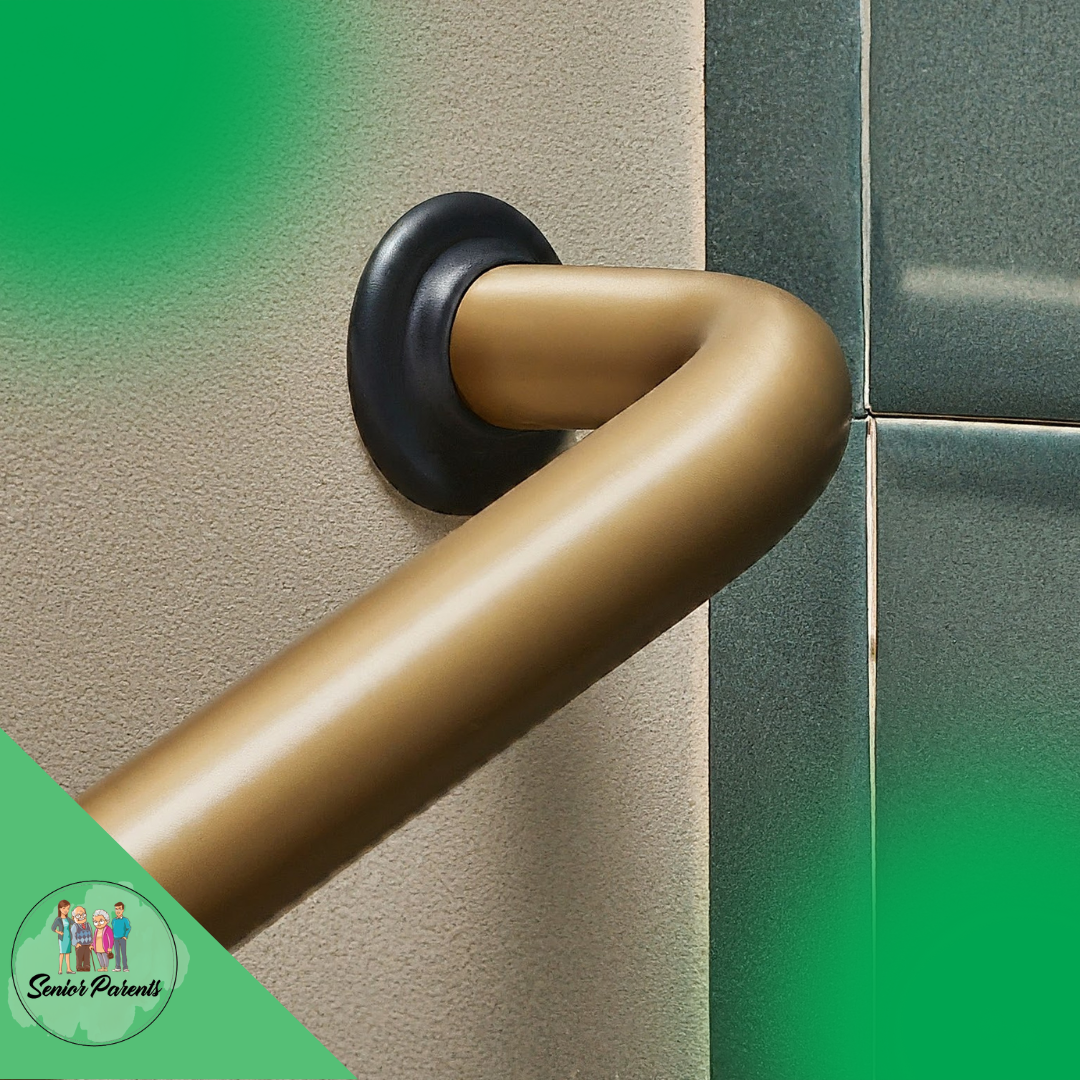
What Should Be Considered When Choosing Between Temporary and Permanent Bathroom Grab Bars?
Individual needs and bathroom layouts are significant considerations. While temporary grab bars offer flexibility and easy installation, permanent grab bars provide increased stability, requiring more thoughtful placement and secure mounting.
How Do Suction Grab Bars Compare to Permanently Installed Ones in Terms of Safety and Stability?
Suction grab bars, typically considered temporary solutions, are less stable and may support less weight than permanently installed grab bars. These permanent fixtures are commonly anchored into wall studs, offering superior safety and stability.
What Are the Key Factors Influencing the Longevity and Maintenance of Temporary Versus Permanent Grab Bars?
The longevity of temporary grab bars often limits itself due to their susceptibility to losing suction over time, which necessitates regular checks. In contrast, permanent grab bars provide durability and require minimal maintenance, as long as they are installed correctly using appropriate hardware.
Connect with Us for Senior Care Insights!
Ready to dive into a world of wisdom and compassion? Stay in touch through our social media channels for touching stories, expert advice, and valuable tips on senior caregiving!
Follow us on:
Stay updated, inspired, and supported with our latest articles and heartfelt stories on senior care. Join our community and be a part of a network dedicated to enriching the lives of our cherished seniors. Follow us today and begin this fulfilling journey with us!
Discover Additional Insights on Senior Care
How to Choose the Right Grab Bars
How Grab Bars Help Prevent Falls
Best Shower Grab Bar for Seniors
The Importance of Grab Bars in Bathrooms for the Elderly




